Since nothing is ever really fully discussed without a Top 10 list, let us commence with the Top 10 in Comic-Book Animation!
10. BATMAN: THE BRAVE AND THE BOLD, Warner Brothers Animation
Didn’t expect to see this make the list, did you? To be honest, when the show was first announced, neither did I. But what was feared by fanboys as a “kiddie” version of the Dark Knight has instead turned out to be a funny and action-packed take on the classic Batman team book, which still manages to find time for moments of darkness and drama among some of the gags and punch-outs. Voice actor Diedrich Bader does a surprisingly good job as Batman, mixing a little Kevin Conroy with a little Adam West. Indeed, the show takes a surprising amount of its lead from the 1966 TV show, with cameos and references sprinkled throughout. And the guest stars have been a delight, with obscure characters like Kamandi and B’Wana Beast sharing the spotlight with reinterpreted standards like Green Arrow and Robin. If you’ve been skipping the series, thinking it’s just for the little ones, you’re doing yourself no favors. Check it out and have some fun.
9. BATMAN BEYOND, Warner Animation
Viewers were treated to a look at Batman’s dystopian future in the criminally underrated series BATMAN BEYOND starting in 1999, which featured teenage Terry McGinnis taking up the cape and cowl some 30 years in the future, with the assistance of his crotchety mentor, an elderly and still intimidating Bruce Wayne. Smartly avoiding the easiest route of simply creating updated “future” versions of Batman’s rogue’s gallery, BEYOND’s producers instead created a whole new mythology for their new Batman that subtly built upon the old without strip-mining it. With the series’ sleek, futuristic designs and electronic-tinged soundtrack, BATMAN BEYOND did what many thought was impossible: create a worthy successor to BATMAN: THE ANIMATED SERIES and redefine Batman for a younger audience.
8. SUPERMAN: THE ANIMATED SERIES, Warner Animation
SUPERMAN: THE ANIMATED SERIES premiered in October 1996, from the same first-rate crew that had produced the outstanding BATMAN animated series. The Man of Steel was voiced here by Tim Daly, best known from his starring role on the sitcom WINGS. Much like the series’ producers, Daly seemed to be taking George Reeves as a model for his performance, as he tended to play Clark Kent as an assertive, take-charge reporter, without a hint of “mild-manneredness” in sight. Daly’s Superman was also right on the money, combining George Reeves’ toughness with Christopher Reeve’s sincerity. It’s a great performance, one that Daly only improves on over the course of the series. Dana Delany brought both toughness and charm to her portrayal of Lois Lane, while Clancy Brown delivered a career-defining vocal performance as Lex Luthor. The series itself was overall a triumph, definitely the best translation of Superman’s entire mythology to either film or television. It gets a little overlooked simply because it followed the groundbreaking BATMAN series, but it’s as much of a gem in its own right. The producers wisely buttressed Superman’s admittedly weaker Rogues Gallery with Jack Kirby’s Fourth World characters, utilizing Darkseid (with a great performance by Michael Ironside) as a frequent opponent for Superman, and one who could really bring the menace. And they made the most of the Superman villains they had, with the standouts being Malcolm McDowell’s chilling Metallo (introduced in the tragic episode “The Way of All Flesh”) and Bud Cort providing the voice for the series’ seriously creepy version of Toyman.
7. CHALLENGE OF THE SUPERFRIENDS, Hanna-Barbera
After several seasons of mealy-mouthed socially conscious SUPERFRIENDS cartoons, in which no direct conflict was allowed, the programming executives at ABC unexplainably grew a spine one season and assigned SUPERFRIENDS producers to create a cartoon show more like the comics, with real villains and real threats. And boy, did they deliver with CHALLENGE OF THE SUPER FRIENDS, under the supervision of story editor Jeffrey Scott, who put together remarkably clever scripts considering the constraints of network standards and practices at the time. Out were the cloying teen heroes like Wendy and Marvin and the Wonder Twins, and in were an all-star cast of DC’s best superheroes and supervillains.
Hanging out in the Hall of Justice were Superman, Batman, Robin, Wonder Woman, Aquaman, Flash, Green Lantern and Hawkman, with newly created heroes Black Vulcan, Apache Chief and Samurai included to add a little much-needed ethnicity to the team, which, it must be admitted, was awful white. Their opposite numbers in the Legion of Doom included Lex Luthor, Brainiac, Bizarro, Toyman, the Riddler, Cheetah, Giganta, Captain Cold, the Scarecrow, Black Manta, Sinestro, Solomon Grundy and Gorilla Grodd. That’s a pretty strong lineup. What really made the show work was the Legion of Doom, who were really the stars when you think about it. Every episode opened with them putting their newest scheme into action, and every episode ended with their escape. They’re motivated, proactive and work well as a team, and more often than not, the Super Friends win out by sheer happenstance as opposed to any measurable superiority of skill or desire.
Most enjoyable was the fact that the Legion of Doom’s plans were always well thought-out and very effective. For example, in “Secret Origins of the Super Friends,” the Legion goes back in time to alter the origins of Superman, Green Lantern and Wonder Woman, depriving the Super Friends of their three most powerful members. In a hilarious moment, Luthor appears just as Abin Sur’s beam is about to take Hal Jordan to receive the Green Lantern power ring and battery from his fallen predecessor, and convinces Jordan to run for cover. Luthor is taken instead, and is soon sporting the GL uniform and ring himself. Heading back to the Hall of Doom, he takes his fellow villains by surprise, who naturally think they’re under attack: “Watch out! It’s the Green Lantern!” “Wrong, fool!” replies Lex, “It’s the Green Luthor!!”
Classic.
6. SPIDER-MAN, Marvel Productions
Spidey returned to animation in 1994 with SPIDER-MAN: THE ANIMATED SERIES. While it paled in comparison to BATMAN, and struggled with a troubled production in its early episodes, it premiered to a generally positive reception and strong ratings, lasting for five seasons and a more-than-respectable 65 episodes. With all kinds of Spider-Man villains making their first appearance on television, from big leaguers like Venom and Hobgoblin to third-stringers like Rocket Racer and the Spot, the series definitely provided the most thorough translation of the Spidey mythology to TV. Despite its shaky start, the series’ historical scope and strong voice cast (including Ed Asner, Mark Hamill, Roscoe Lee Browne, and an engaging Christopher Barnes as Peter Parker), earns it a spot on the top 10. The show even tried an ambitious adaptation of the Secret Wars, which, while not 100% successful, has to be applauded just for sheer audacity.
5. X-MEN, Saban
It wasn’t until 1992 that the X-Men broke open wide to the mainstream in a blockbuster way, with the premiere of X-MEN on the Fox Network. A smash hit upon its premiere and a ratings champion for the next six years, X-MEN was primarily based on the team roster of the mid-1990s, featuring Cyclops, Beast, Rogue, Storm, Jean Grey, Jubilee, Gambit, Wolverine and Professor Xavier. However, this didn’t stop them from adapting nearly every significant storyline from the X-Men’s comic book history, from “Rise of the Phoenix,” to “The Dark Phoenix Saga” to “Days of Future Past,” with dozens of X-characters making guest appearances over the course of its 76-episode run. Not only that, but X-MEN wasn’t afraid to make its audience pay attention, with frequent four- and five-episode continued storylines, as well as long-running story arcs that would span the course of a season. The X-MEN series cemented the characters’ perception within the pop-culture zeitgeist as something everyone should know about, and most definitely paved the way for Bryan Singer’s summer blockbusters.
4. JUSTICE LEAGUE: THE NEW FRONTIER, Warner Animation
Darwyn Cooke’s outstanding 2003 graphic novel was adapted to a direct-to-DVD feature in 2008, with similarly outstanding results. Directed by Dave Bullock and scripted by animation vet Stan Berkowitz, JUSTICE LEAGUE: THE NEW FRONTIER manages to retain most of the important sequences from the lengthy graphic novel, and even the material that had to be eliminated for space is alluded to in clever and affecting ways. Set in the late 1950s and early 1960s, NEW FRONTIER is Cooke’s love letter to the Silver Age heroes of DC Comics, and Bullock and Berkowitz manage to keep every drop of that affection on the screen. Sensitive, subtle voice work from actors like David Boreanaz, Kyle MacLachlan, Lucy Lawless and Miguel Ferrer completes the package.
3. BATMAN BEYOND: RETURN OF THE JOKER: Warner Animation
This gets a separate entry from BATMAN BEYOND above not only because it was released as a separate entity, a direct-to-DVD feature film, but because it’s a marvelous piece of work that connects the BATMAN and BATMAN BEYOND animated series in very dark and disturbing ways. Taking place during the BATMAN BEYOND series, the return of someone claiming to be the Joker to Gotham City leads new Batman Terry McGinness to investigate the final days of the original Joker, leading to some of the most disturbing Batman animation ever, which reveals not only the final fate of the Joker, but young Robin Tim Drake as well. This scene was so dark it actually prompted WB to force the movie to be re-edited and sanitized, until demand from the fanbase prompted the release of a restored director’s cut.
2. JUSTICE LEAGUE/JUSTICE LEAGUE UNLIMITED, Warner Animation
The year 2001 saw the Warner Animation production team behind the outstanding BATMAN and SUPERMAN animated series tackle the JLA with JUSTICE LEAGUE, airing on Cartoon Network. With a classic lineup of Superman, Batman, Wonder Woman, Flash, Martian Manhunter, Green Lantern and Hawkgirl, JUSTICE LEAGUE featured the best and most faithful translation of DC’s characters to date to any video medium. While the first season was slightly uneven, as the production team found its footing and figured out both how to best tell compelling stories with so many protagonists (as well as how to best use Superman in a team dynamic without making him seem weaker than he should), the second season was rock solid, culminating in “Starcrossed,” a smashing three-episode finale that pitted the Justice League against a full-on alien invasion force, with devastating results for both the planet and the League. Highly recommended.
And just when it seemed the good times were over, the series was back, slightly retooled as JUSTICE LEAGUE UNLIMITED, which assembled nearly every DC superhero you can think of under the Justice League banner. Despite the new cast of dozens, the series still managed to tell season-long, suspenseful stories while not neglecting the core characters that had made the series popular in the first place. JLU’s two seasons each had a central arc, one extremely ambitious political thriller that dealt with the notions of power and responsibility while still being action-packed, and the other a more back-to-basics supervillain brawl that elicited fond memories of the old Legion of Doom days. Even better than the first JL series, if you ask me.
1. BATMAN: THE ANIMATED SERIES, Warner Animation
Premiering in 1992 was Warner Brothers’ BATMAN: THE ANIMATED SERIES, which stands to this day as the single best version of the character in any medium: comics, TV, movies, you name it. Before ’92, action-adventure animation was all but dead on American television. Following the success of its new comedy series TINY TOON ADVENTURES, Warner Animation President Jean MacCurdy made it known that they were looking to develop a new BATMAN animated series, and that anyone with an idea was welcome to make a pitch. TINY TOONS storyboard artist Bruce Timm and background painter Eric Radomski were chosen to put together a sample reel, and their two-minute short netted them the jobs as the producers of the new series. Writers Alan Burnett and Paul Dini were brought in to spearhead the scripting of the series. Burnett and Dini shared Timm’s vision of how the character should be portrayed: dark, serious and brooding.
But it wasn’t just the stories that were groundbreaking. The character design, primarily the work of Bruce Timm, along with artists Lynne Naylor, Kevin Nowlan and Mike Mignola, among others, eschewed the detail-heavy, ultra-real style favored by adventure cartoons in the past, in favor of a cartoonier approach, for lack of a better word, which combined the barrel chests and square jaws of the Fleischer SUPERMAN cartoons of the 1940s with the clean linework of Alex Toth (the influence of whose Space Ghost design is clearly apparent). The influence of such Batman artists as Kane, Sprang, Miller and Mazzuchelli is also in evidence.
Furthermore, the entire series was given a moody, timeless feel, in which 1940s architecture, wardrobe and roadsters co-existed with modern-day, late ’90s technology, making the series feel instantly nostalgic yet never dated. The backgrounds, designed by Ted Blackman based on Eric Radomski’s vision, were painted on black paper, lending the entire series a noir-ish darkness appropriate to their vision of the Dark Knight.
The acting on the series was top-drawer as well. Rather than go to the same recycled group of cartoon voice actors who had been working in every Saturday-morning series at the time, series voice director Andrea Romano opened the auditions up to the best actors available, and instructed them that the show was to be played straight, as if they were performing a film or stage role. In addition, as frequently as possible, the actors would record their roles together, providing an interplay and energy not possible when parts are recorded piecemeal. As a result, the casting for BATMAN: THE ANIMATED SERIES resulted in what I believe to be the most talented cast ever assembled for an animated series, with actors who in many cases could have easily stepped into the part in a live-action feature-film version, and performed splendidly. In addition, the score for the series was provided by Shirley Walker and her team of composers, whose lush, operatic soundtracks granted each episode a soaring, larger-than-life feel.
As for Batman, Kevin Conroy gave a nuanced, textured performance, in which he managed to wring the most intimidation, anger or pathos out of as few lines as possible. Conroy also managed to deftly delineate between Batman, Bruce Wayne and Bruce Wayne’s public persona, altering his voice’s pitch and timbre to make them each instantly identifiable, yet still recognizably the same character at its core.
Much like the comics, however, Batman is only as good as his villains, and BATMAN: THE ANIMATED SERIES did a marvelous job of translating Batman’s Rogues’ Gallery for animation, with far more successes than failures. In many cases, their version wound up being far superior to earlier versions, and often supplanted them not only in the public consciousness, but in the source-material comic books as well.
You can’t have a Batman series without the Joker, and BATMAN: THE ANIMATED SERIES provided probably the most well-rounded and satisfying portrayal of the Joker in any medium, comics included. As realized here, the Joker was both funny and terrifying, capable of being motivated by egotism as well as sheer insanity. The Joker design seemed most inspired by Bob Kane’s original artwork, but what really made the character come alive was the voice, provided by Luke Skywalker himself, STAR WARS’ Mark Hamill. The part had originally been given to Tim Curry, but the decision was made to recast, with producers feeling that Curry, while sufficiently threatening, wasn’t providing the necessary madcap levity and humor for the part. Enter Hamill, who had already played a supporting role in an earlier episode, but had made his desire known to play one of the trademark villains. One audition later, including Hamill’s unforgettable rendition of the Joker’s laugh, and the part was his. Hamill’s Joker could be foaming at the mouth in an insane rant one moment, and then instantly switch gears into a witty charmer.
As of 1996, BATMAN: THE ANIMATED SERIES had been out of production for two years, but still remained extremely popular in reruns. However, a variety of factors combined to encourage Warner Brothers to order a new series of episodes produced. First, the series, which had originally aired on FOX, was moving to the WB, and the network wanted new episodes to freshen up the original 85 produced. Secondly, already in production was the new SUPERMAN animated series for the WB, and a combined SUPERMAN/BATMAN hour was thought to be a boon to the health of the new series (let’s face it, Batman’s always going to be more popular).
Finally, the newest Batman feature film was due to be released in the summer of 1997, and Warner Brothers wanted episodes of the animated series that would feature the film’s newest star Batgirl in a more prominent role.
Rather than simply go right back to the formula and crank out new episodes in the same style as before, the producers took this opportunity to rethink the series from the bottom up, throwing out what hadn’t worked in the past, introducing new characters and relationships, and re-designing practically the entire show. The biggest change was that, apparently, the WB Network didn’t share FOX’s reticence in putting a child in danger, so Dick Grayson was immediately changed to Nightwing, while a new, much younger Robin was introduced in Tim Drake. With both the new Robin and Batgirl (now privy to Batman’s secrets and a full-time member of his team) appearing in almost every episode, and the distant, alienated Nightwing making occasional appearances, Batman’s days as a loner were over. This didn’t mean that Batman lost any of his grim, scary appeal — just the opposite: even with Robin and Batgirl around, it seemed that Batman talked even less than he did in the first series, and was darker and scarier than ever.
Having built on the experience from the first series, the animation was tighter and more lavish than ever (especially for network television), and the scripts were outstanding, with not a stinker in the series’ 27-episode run.
So those are my picks. Now let’s hear yours!

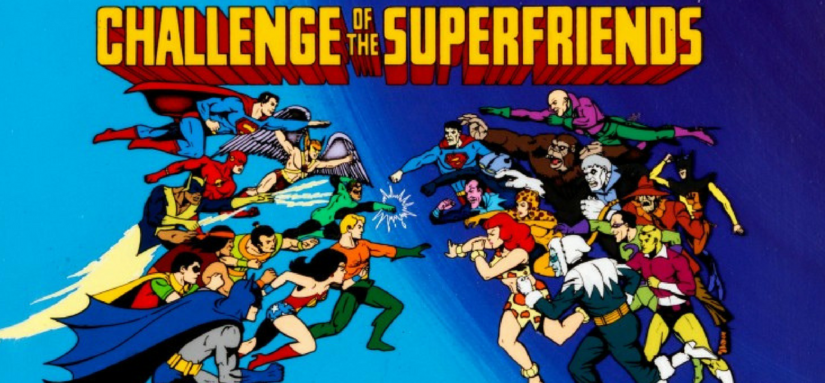
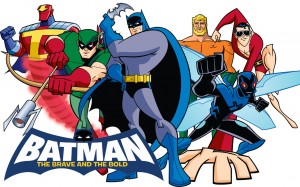
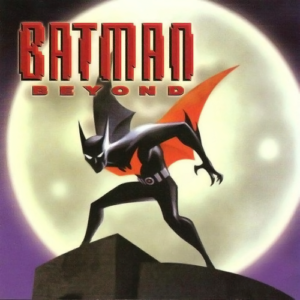
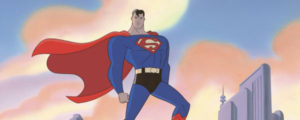
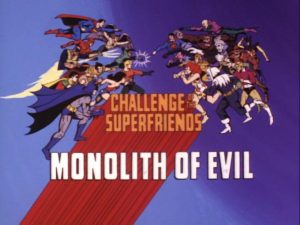
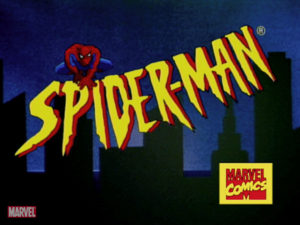
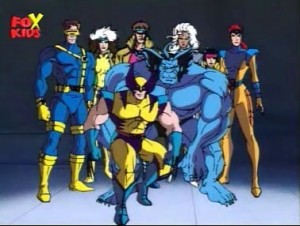
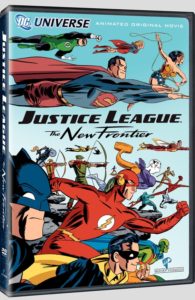
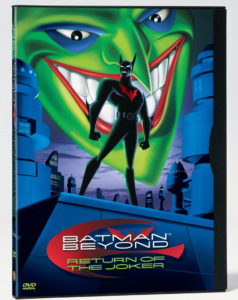
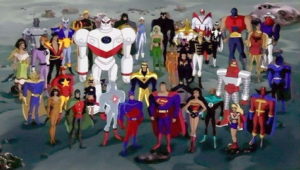
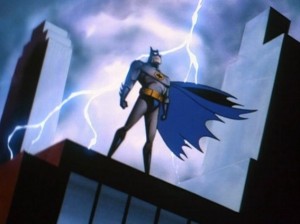
Comments are closed.